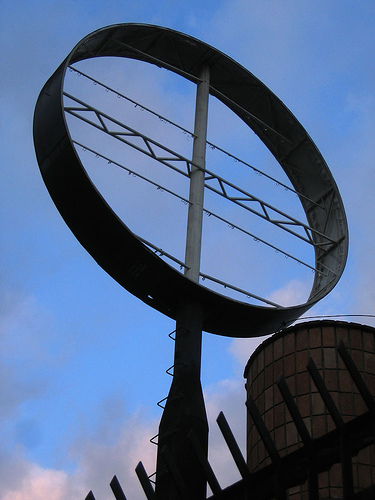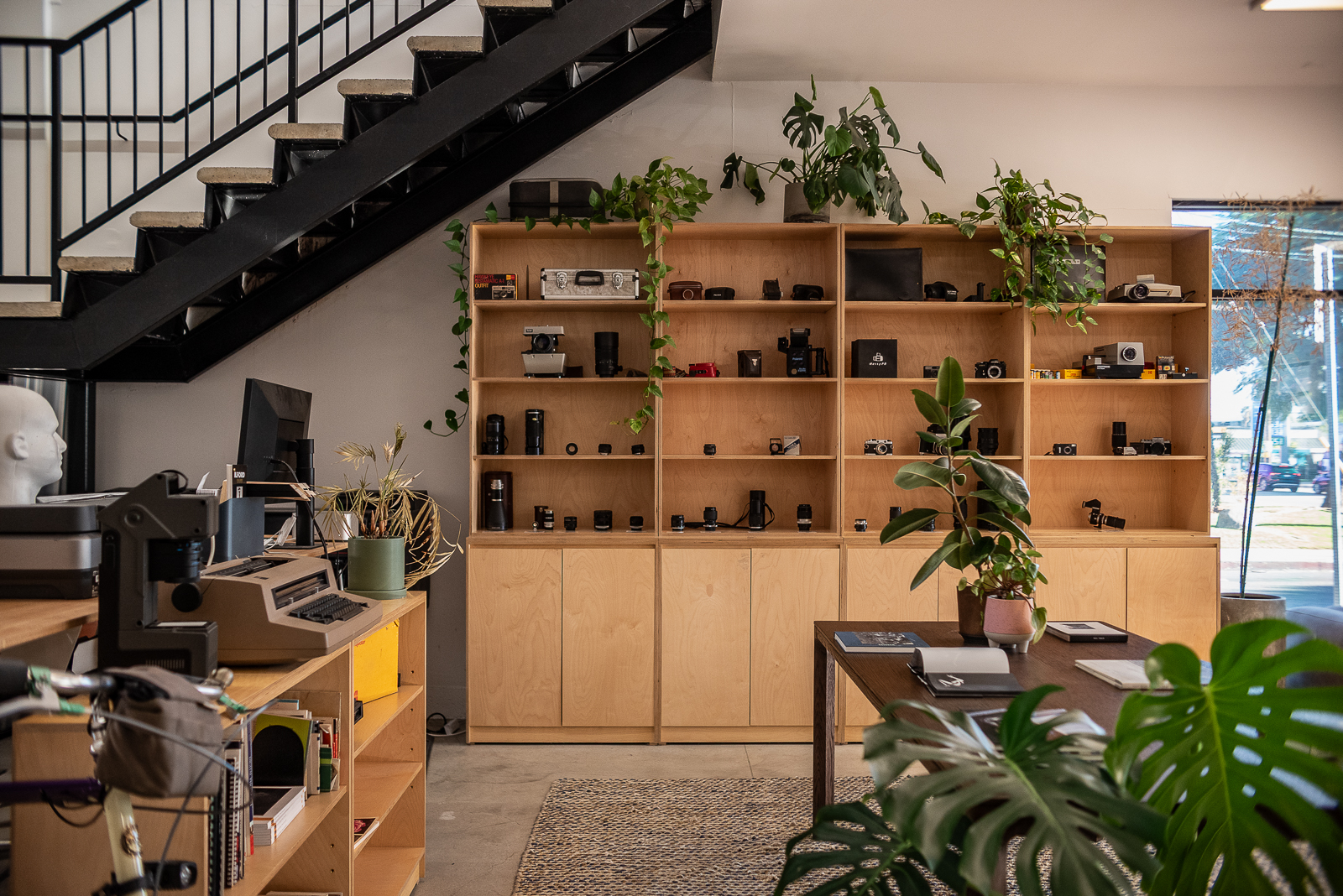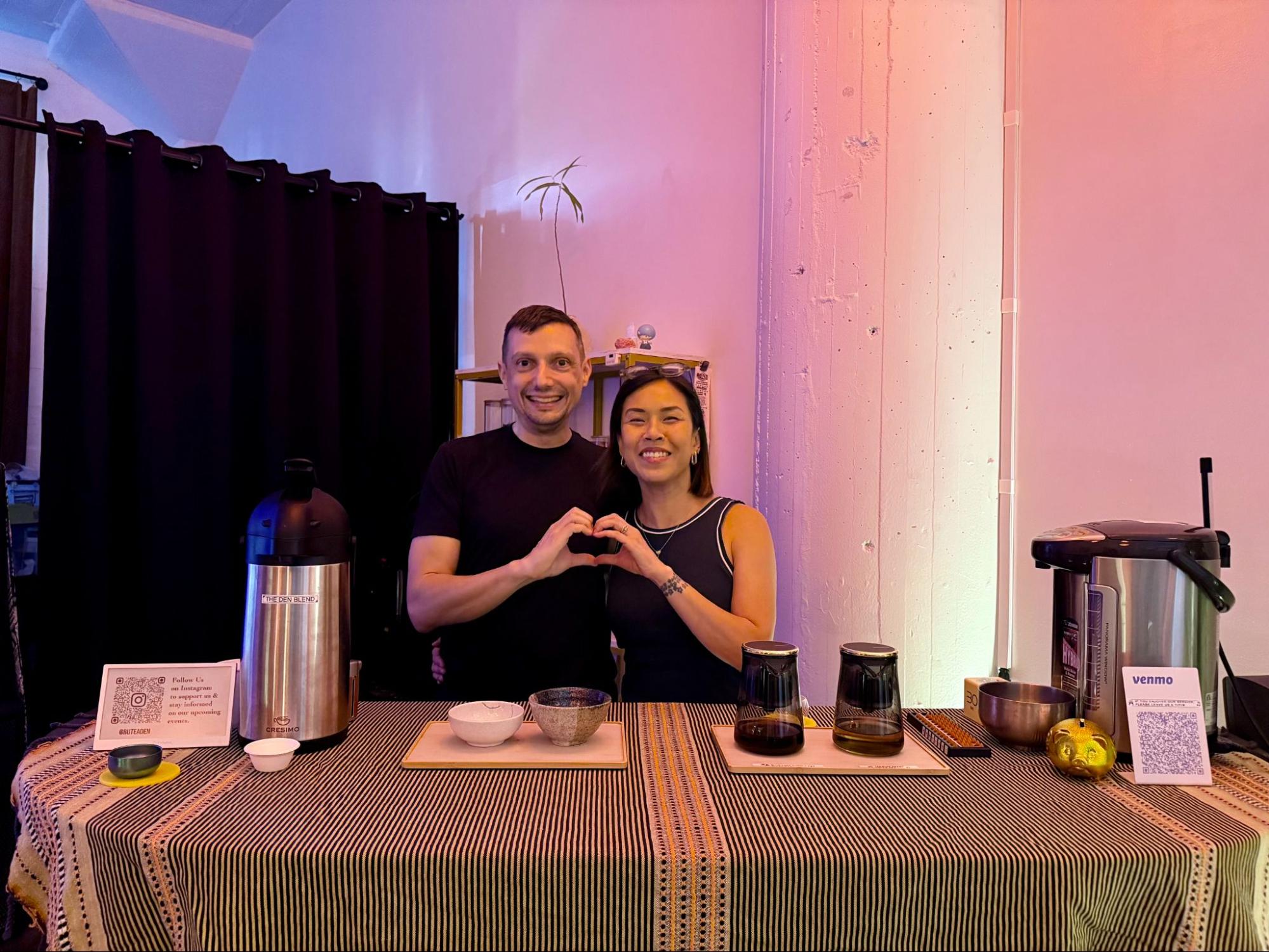
Sometimes, the urban man or woman or needs to get away for some fresh air for his or her lungs. It stands to reason that the urban man or woman should also get away every once and a while to get a fresh vista for his or her eyes, an environment free from visual pollution. As much as we love livin' ("just enough") for the city, and as much as we love focusing on design and text and graphics arts for LA Taco, it can get a bit stultifying in this dense urban environment. Some might go as far to describe it as a "visual assault"; others might describe it more lyrically, as in the Five Man Electrical Band 1971 hit/Tesla 1990 hit, Signs: "Sign, sign, everywhere a sign/ Blockin' out the scenery, breakin' my mind/ Do this, don't do that, can't you read the sign?"
For a sign free environment, we can head to one of a few places: Joshua Tree National Park, the Neubau district of Vienna, or São Paulo, Brazil.
Joshua Tree National Park
Let's take these one at a time, with the logical starting point being the place closest to our Los Angeles County home. Joshua Tree National Park is about three hours away, on a path that will take you right past Morongo Indian Casino in Cabezón. There was an article in last month's Economist illustrating what a lucrative investment gaming has been for the Morongo Band of Mission Indians:
As for the Morongo, most no longer do any paid work at all. The 775 adult members of the tribe receive seven-tenths of the casino's profits in dividends (the rest is spent by the tribal government). The exact sum is kept secret, but Robert Martin, the tribal chairman, allows that it is roughly $15,000 to $20,000 per person, per month. Not surprisingly, some people have rediscovered their Morongo roots and moved back to the reservation. As Mr Martin observes wryly: “It wasn't fashionable to be Indian until recently.”
So, if you have kenophobia, then you should stop at the Indian Casino instead of going to Joshua Tree; while you might be forgiven for thinking that "kenophobia" is the irrational fear of "keno" , the kind of lottery game you might find at said casino, "kenophobia" is actually an irrational fear of open spaces. Open spaces are in abundance at Joshua Tree. It's a popular place for rock climbing and bouldering, and is pleasantly sign-free vista, except for the occasional marker, informational plaque, or the sign made out of glass bottles in the shape of a Joshua Tree as you enter the park.
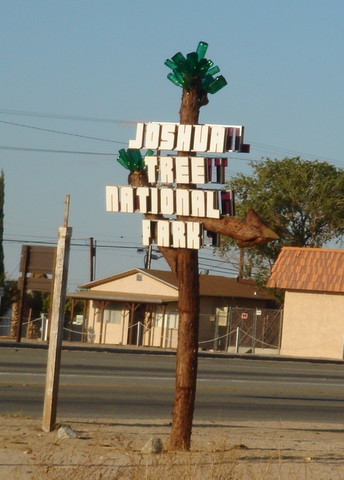
We made the trip a few weeks ago after a heavy shower in LA in hopes of a brief explosion of desert color, but the guard at the booth told me that that they hadn't seen any of the precipitation that was visited on other parts of the Southland during that particular weekend. A few small cacti and the odd wildflower provided blooms, but the biggest floral display was put on by the Joshua Trees themselves. We got lucky, I guess; Joshua Trees don't bloom every year.

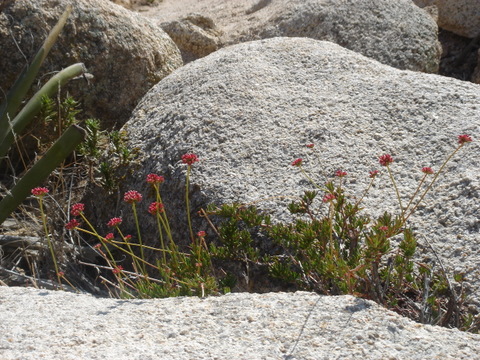
Alas, man-made signs and symbols are hard things from which to escape, even in a national park. Some petroglyphs (images carved in rock) and pictographs (images painted with mineral paints) attributed to Native Americans can be seen in this wind-eroded hollow in the side of a large granite boulder.
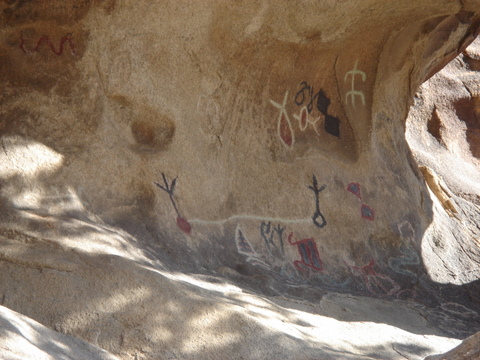

Oh, did I say something about "clean air"? Well, while the scenery is all-natural in Joshua Tree, the atmosphere is not as pristine. It seems that the prevailing easterly winds blow a lot of pollution from the LA basin straight into the Joshua Tree area. The pollution messes with the natural nitrogen levels of the desert soil. In addition, the level of ozone in the park's air is said to be consistently above the range considered healthy for humans, and these elevated levels have been known to cause damage to plants as well. It used to be that you could see all the way to Mexico from the park's highest lookout, Keys View. You can't really see to Mexico anymore, but an extreme optimist might remind you that air pollution is known to increase the beauty of sunsets.
São Paulo, Brazil
As I mentioned, there are some other places where you can go to get a "sign-free" environment. In São Paulo, Brazil, home to 11 million people and one of the biggest cities in North or South America, enacted a ban on all out-door advertising and signs. Brought about in part as a response to an estimated 13,000 illegal billboards in the city, the ban went into effect January 1st and has widespread support among the average paulistano.

In a interview last month on NPR's On the Media, Brazilian journalist Vinicius Galavo describes the ban on the city's social consciousness:
And now it's amazing. They uncovered a lot of problems the city had that we never realized. For example, there are some favelas, which are the shantytowns. I wrote a big story in my newspaper today that in a lot of parts of the city we never realized there was a big shantytown. People were shocked because they never saw that before, just because there were a lot of billboards covering the area...in the Korean neighborhood, they have a lot of small manufacturers, these Korean businessmen. They hire illegal labor from Bolivian immigrants. And there was a lot of billboards in front of these manufacturers' shops. And when they uncovered, we could see through the window a lot of Bolivian people like sleeping and working at the same place. They earn money, just enough for food. So it's a lot of social problem that was uncovered where the city was shocked at this news."
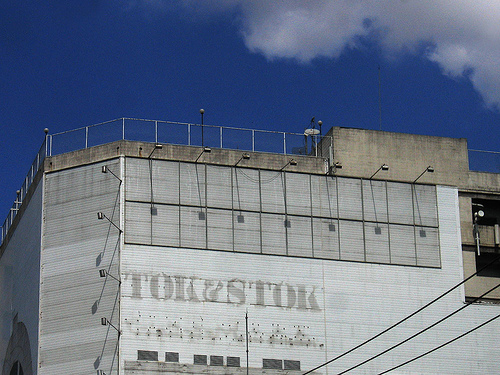
Another journalist, Roberto Pompeu de Toledo, writing for the newsmagazine Veja, waxed philosophic in his praise of the change: "[The law is] a rare victory of the public interest over private, of order over disorder, aesthetics over ugliness, of cleanliness over trash...For once in life, all that is accustomed to coming out on top in Brazil has lost.”

Vienna, Austria
The commercial strip in the Neubau district of Vienna underwent a drastic change of mood in the summer of 2005, when all commercial logos and text visible from the street was covered by bright yellow foil or paper. The coverings were part of a two-week art project dubbed "Delete!" — created by artists Christoph Steinbrener and Rainer Dempf to spark public debate about just how much advertising society can take.
Ironically, the "Delete!" project became a kind of conceptual advertising in itself. In order to get the local merchants to agree, it was pitched as a way to attract more shoppers and tourist to the area. The Chamber of Congress contributed the greatest portion of the project's $245,000 budget.
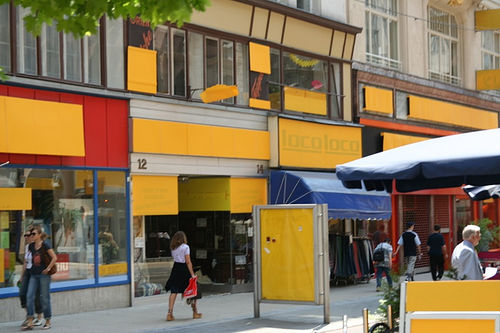
Regular readers to TACO and other cognoscenti of the taco-lifestyle will not be surprised to see that the surfeit of blank space became a fertile environment for graffiti. This particular scrawler wrote, in German, "I need consumer information!"
In the East, Buddhism has found "emptiness" to be the a universal characteristic of all things, a fact whose realization is key to enlightenment. In the West, these same concepts of "the void" and "emptiness" have been grappled with by the most celebrated minds throughout our history, leading to an idea of horror vacui that is both an artistic term as well as an Aristotelian aphorism: "nature abhors the vaccum". If we can't say with certainty that the urban man and woman abhor the vacuum, observation bares out that many of them definitely can't resist a blank canvas.
Sources, Links:
Joshua Tree
Economist Article: "The last shall be first" (April 12, 2007)
National Park Service "Joshua Tree: Air Quality"
"What's Killing Joshua Tree National Park?" - Judith Lewis for LA Weekly, (July 8, 2004)
São Paulo
NPR's On the Media, (April 20, 2007)
Tony de Marco on flickr (Photos)
Vienna
"Artists 'delete' ads to provoke discussion" - Associated Press Article via MSNBC, (June 15, 2005)
